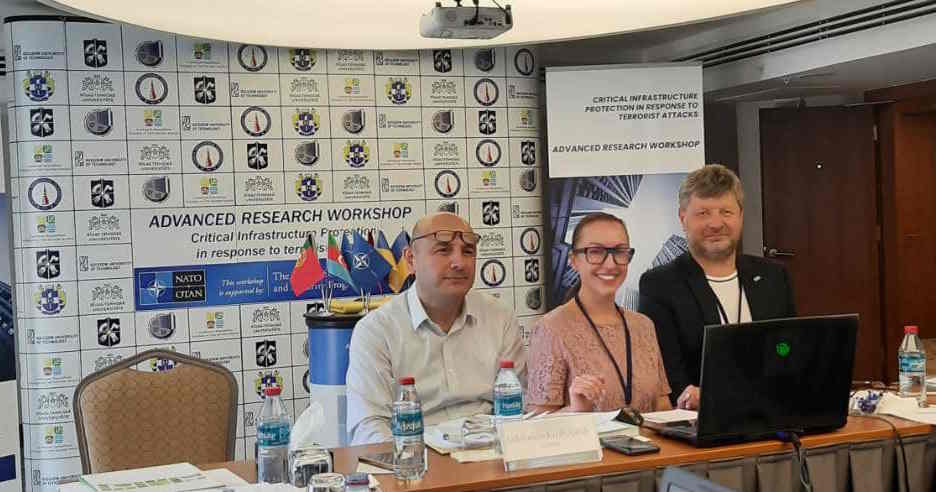
In today’s world, with the effect of globalisation, people’s migration from small or underdeveloped places to larger cities in order to have better living conditions causes the population of these cities to increase rapidly. This situation causes some problems to be carried to the cities and puts the security of the cities in danger. Terrorist attacks are at the top of these dangers. The fact that people who settled in big cities cannot keep up with life here, the economic difficulties, political or religious differences of opinion, and income imbalances cause the peace environment in big cities to deteriorate over time. As a result, the use of some communities living in the city by illegal groups may lead some people and groups in these cities to carry out terrorist attacks.
Such attacks can be made to schools, religious centres where people are less dense, as well as underground structures such as subways where people are much more concentrated, and infrastructures that are the lifeblood of cities.
The fact that people or installations in these structures are not harmed in the event of bombs or terrorist attacks on the underground structures and infrastructures of cities during any war depends on the structural components, dimensions, ability to absorb shock waves etc of these underground structures. If the attack is a poisonous gas attack on the underground structure, then the air movements in the underground structure and the evacuation of the existing ambient air gain great importance for the survival of people [1,2]. For all these reasons, the underground structures and infrastructures of cities are of great importance today and in the design and planning of the development of large cities, modernization of existing critical infrastructures against emergencies, exposure to explosives and improving these structures to predict and increase their stability in war situations and to ensure their technological security issues should be given more and more attention.
The process of urbanization is typical for all countries of the world. The great city is the engine of the world economy, cultural, historical, spiritual, political and innovation centres where global problems of today are posed and solved. Critical infrastructure acts as a life support system for our daily existence. Thanks to technological progress, this life support system has become extremely complex and developed. The issue of life safety in large cities is associated with a complex of threats of a man-made, natural and socio-political nature (terrorist attacks and wars). Therefore, more and more attention should be paid to the design and planning of the development of large cities in the issues of combating emergencies, ensuring technogenic safety, and the vital activity of citizens. No less urgent are the problems of modernization of existing critical infrastructure, forecasting its stability during explosive loads, improving structures in order to increase their stability in war. The complexity of this process lies in the interconnected underground objects of critical infrastructure with surface structures of the urbanized area, with an assessment of the change in the stress-deformed state of the soil massif around these structures and the effective development of measures to stabilize this conglomerate [3,4].
The proposed workshop could traine the specialists using innovative computer simulation methods to solve the problem of protecting critical infrastructure and increase its resilience from explosions as a result of terrorist attacks.
The main goal of this proposal is to conduct an intensive teaching event, to accumulate the ideas of specialists and other stakeholders who directly conduct or develop methods to protect critical infrastructure from terrorist attacks.
This workshop will address the SPS Key Priorities, namely Facilitate mutually beneficial cooperation on issues of common interest, including international efforts to meet emerging security challenges: Counter-Terrorism.
Main objectives of the proposed ARW are the following:
1) To engage experts in the field of protection of critical infrastructures in response to terrorist attacks and risk minimization of potential emergencies at critical infrastructure facilities from Ukraine, Turkey, Poland and other NATO members and partner countries in conversation on the modern computer simulation and modeling instruments and training on psychological resistance in the face of treats from terrirism and military operations.
2) To enhance knowledge and qualification of specific military groups, personnel of critical infrastructure facilities and representatives of the academic environment in the field of critical infrastructures protection.
3) To consolidate NATO and partner countries around improving approaches against terrorist attacks on the bases of unique experts experience in modelling and computer simulation of the blast waves impact on critical infrastructure and provide research platform for new collaboration.
The main outcomes of this ARW event are:
- new competencies, knowledge and skills development in response to terrorist attacks that could happened in critical infrastructure objects;
- development of a set of proposals based on the innovative methods of computer simulations and modelling for risks minimization from explosions impact in critical infrastructure objects;
- to form a broad network of researchers in the field of protection of critical infrastructures in response to terrorist attacks from NATO and Partner Countries;
- to initiate collaborative efforts of highly skilled experts to further enhance the defence of critical infrastructures in response to terrorist attacks;
- new research Platform development aiming to organise and implement new R&D projects in the field of prevention of risks from the terrorist attacks.


